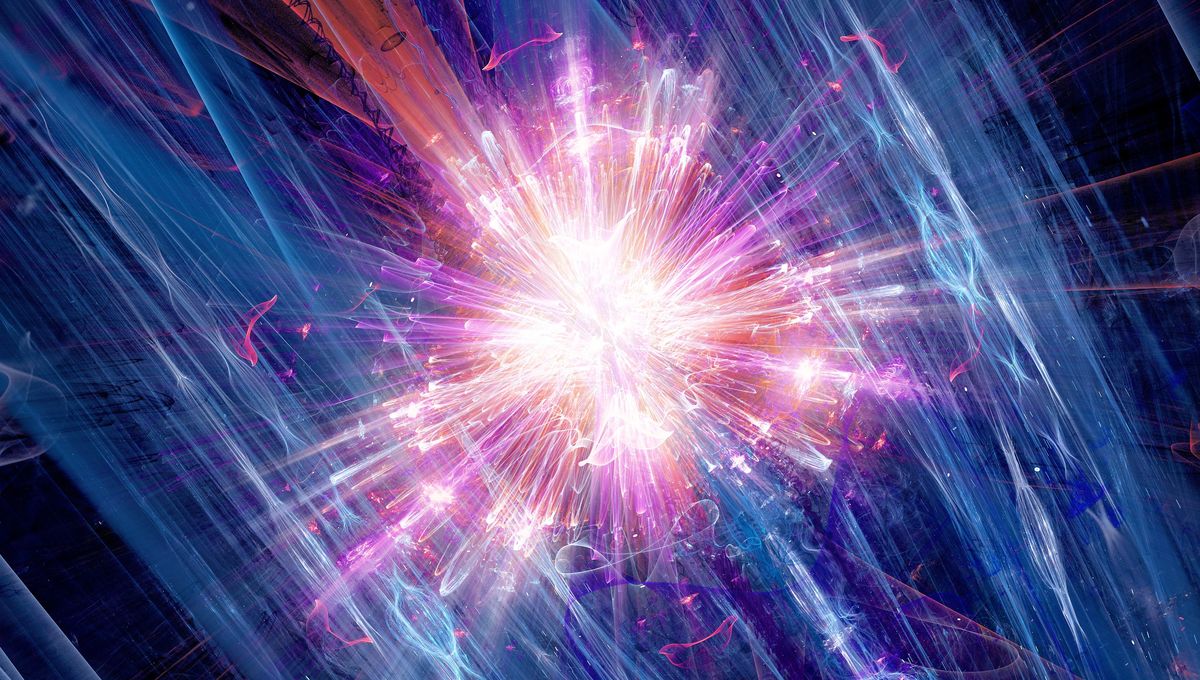
Baryons are subatomic particles made up of an odd number of quarks. Protons and neutrons found at the center of atoms are a type of baryon, but there is a whole menagerie of other baryons made of rarer and more unstable quarks. Because of that, these baryons decay into other particles, and the rarest known decay of all was the Σ+ turning into a proton, a muon, and an antimuon.
Researchers with the LHCb experiment, one of the four main experiments running on the Large Hadron Collider at CERN, have studied this decay. Out of 100 trillion Σ+ particles produced in the collisions from the experiment, the team found around 237 events consistent with this decay.
“This is the rarest baryon decay ever observed so far,” Gabriele Martelli, a member of the LHCb collaboration, told IFLScience.
This decay happens only once every 100 million Σ+ particles produced in the lab. Its first discovery at Fermilab was quite a shock because it looked like the decay was undergoing something peculiar. They had three clear signals that the decay was happening, but it appeared that the Σ+ particles were decaying into a proton and an unknown particle, before the particle decayed into a muon, a heavy cousin of the electron, and an antimuon.
“That was certainly not foreseen by anyone at that time. After that experiment, there were dozens of theories proposed to explain this new particle. It was also searched in other experiments in different modes. But there was no other experiment before the LHCb that could really search for the Σ+ decay to confirm it,” Francesco Dettori, also a member of the LHCb collaboration, told IFLScience.
The unknown particle was a prime place to look for physics beyond the standard model of particle physics, which is the crucial theory of how reality works at the smallest scale. The LHCb data instead show that the three offspring particles form together, without the need for anything special before.
“It really seems that everything is in agreement, unfortunately if you want, with the current understanding of particle physics, which we call the standard model,” Dr Dettori continued.
LHCb was not exactly designed to study this decay; it is an experiment studying the processes that might have led to matter being more abundant than antimatter. However, some of the properties made the experiment well suited to capture details of this process among the background data, especially due to the particle being a little bit more stable than many other processes.
“The Σ+ can live a little bit longer, so it can fly for some meters. And after these meters, the sigma actually decays rapidly into a proton and a couple of muons,” Dr Martelli explained.
“It has a lower momentum compared to the particle that we typically study, so it was actually a background for our experiment. But since we were able to record it anyway, at the end of the day, after the run was taken, we looked back at the data and we could do this analysis. I think this demonstrates that there is room to study very, very rare processes,” Dr Dettori added.
The research, supported by the Instituto Nazionale di Fisica Nucleare, shows that even an experiment with a clear mission in particle physics can often find something unplanned. This was also demonstrated by a dark matter detector spotting an incredibly rare atomic decay, dubbed the rarest event ever recorded.
The study has been accepted for publication in Physical Review Letters.
Source Link: “Rarest Baryon Decay Ever Observed So Far” Found In Experiment That Wasn’t Even Looking For It